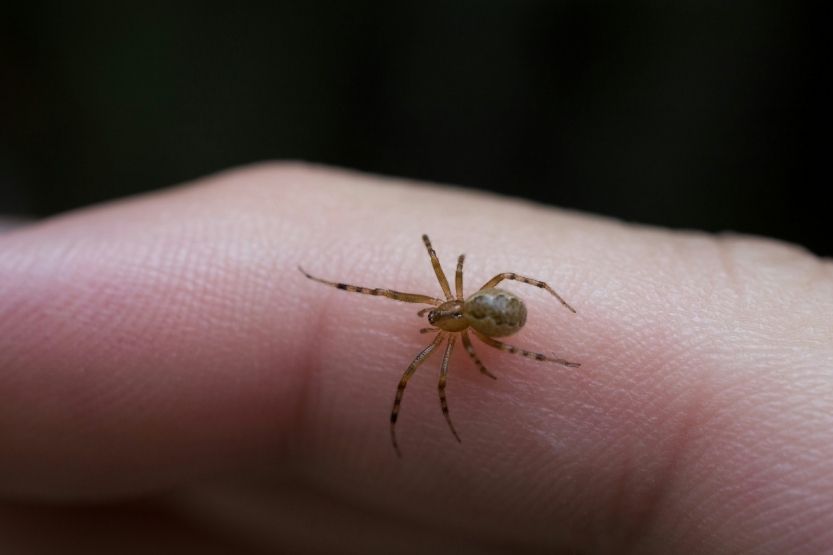The brown recluse baby, also known as the juvenile brown recluse spider, is a subject of fascination and concern for many. These small spiders, while not aggressive, can pose potential risks if encountered. Understanding their characteristics, behavior, and habitat is crucial for anyone living in areas where they are prevalent. This article delves into the fascinating world of the brown recluse baby, providing insights into its biology, potential dangers, and safe practices for coexistence.
In recent years, the brown recluse spider (Loxosceles reclusa) has gained notoriety due to its venomous bite, which can lead to severe medical issues. While adult spiders are often the focus of discussions regarding their dangers, it is essential to understand that brown recluse babies, or spiderlings, also play a significant role in their ecosystem and can impact human interactions. This comprehensive guide will explore various aspects of the brown recluse baby, ensuring that readers are well-informed about these intriguing arachnids.
As we delve deeper into the characteristics and behaviors of brown recluse babies, we will also discuss prevention and first aid in case of a bite. Our goal is to equip readers with the knowledge they need to recognize and respond to potential encounters with these spiders. Whether you are a homeowner, a curious nature enthusiast, or someone interested in pest control, this article aims to provide valuable information that adheres to the principles of expertise, authoritativeness, and trustworthiness.
Table of Contents
- Biography of the Brown Recluse Spider
- Characteristics of Brown Recluse Babies
- Habitat and Distribution
- Behavioral Patterns
- Potential Dangers of Brown Recluse Babies
- First Aid for Brown Recluse Bites
- Preventing Encounters with Brown Recluse Babies
- Conclusion
Biography of the Brown Recluse Spider
The brown recluse spider, native to the United States, particularly thrives in the central and southern regions. Understanding its life cycle is essential to comprehend the brown recluse baby better. Here’s a brief overview of its biological journey:
| Aspect | Description |
|---|---|
| Common Name | Brown Recluse Spider |
| Scientific Name | Loxosceles reclusa |
| Habitat | Wooded areas, homes, and sheds |
| Life Cycle | Egg, spiderling (baby), juvenile, adult |
| Diet | Insects and small invertebrates |
Characteristics of Brown Recluse Babies
Brown recluse babies are often mistaken for other spider species due to their size and coloration. Here are some distinguishing characteristics:
- Size: Brown recluse babies are significantly smaller than adults, measuring only about 1/4 inch long.
- Color: They typically exhibit a light brown coloration, often with a darker violin-shaped marking on their back, though this may be less pronounced in young spiders.
- Legs: Their legs are long and slender, which helps them navigate through their environment quickly.
Habitat and Distribution
Brown recluse spiders prefer warm, dry environments. They can often be found in:
- Woodpiles
- Attics and basements
- Inside closets and storage boxes
- Underneath furniture
They are primarily located in the Midwestern and Southern United States, with a higher concentration in states like Missouri, Arkansas, and Kentucky. Understanding their habitat is crucial for prevention measures.
Behavioral Patterns
Brown recluse babies exhibit specific behaviors that are essential for their survival:
Hunting and Feeding
As predators, brown recluse babies hunt for small insects, using their webs to trap prey. They primarily feed on:
- Flies
- Beetles
- Ants
Defensive Behavior
Unlike some spider species, brown recluse babies do not seek out human interaction. They are more likely to retreat when disturbed, preferring to hide in dark, secluded areas. This behavior is crucial for their survival in a world filled with larger predators.
Potential Dangers of Brown Recluse Babies
While brown recluse babies are not aggressive, their bites can lead to serious medical conditions. Here’s what you need to know:
- Venom: The venom of a brown recluse spider can cause necrotic skin lesions, which may require medical attention.
- Allergic Reactions: Some individuals may experience allergic reactions to the bite, leading to severe symptoms.
- Misdiagnosis: Bites can be misdiagnosed as other conditions, emphasizing the importance of proper medical evaluation.
First Aid for Brown Recluse Bites
In the unfortunate event of a brown recluse bite, it’s essential to respond quickly:
- Clean the bite area with soap and water.
- Apply a cool compress to reduce swelling.
- Seek medical attention if symptoms worsen or if necrosis develops.
Preventing Encounters with Brown Recluse Babies
Here are some effective strategies to prevent encounters with brown recluse babies:
- Seal cracks and crevices in your home.
- Reduce clutter in storage areas.
- Regularly check and clean under furniture and in dark corners.
- Store items in sealed containers.
Conclusion
Understanding the brown recluse baby is crucial for anyone living in or visiting areas where these spiders are prevalent. By recognizing their characteristics, behaviors, and potential dangers, individuals can take proactive measures to prevent encounters and respond appropriately in case of a bite. Knowledge is power, and we encourage readers to share this information with others to promote awareness and safety. If you have any comments or experiences regarding brown recluse interactions, please share them below!
Thank you for reading! We hope you found this article informative and engaging. Be sure to check back for more articles on fascinating topics and stay safe in your environment.
Celebrating Disney 100 Years: A Journey Through A Century Of Magic
Dakota Johnson Naked: A Deep Dive Into Her Career And Impact
Exploring The Life And Career Of Ryan Murphy: A Creative Genius In Television


